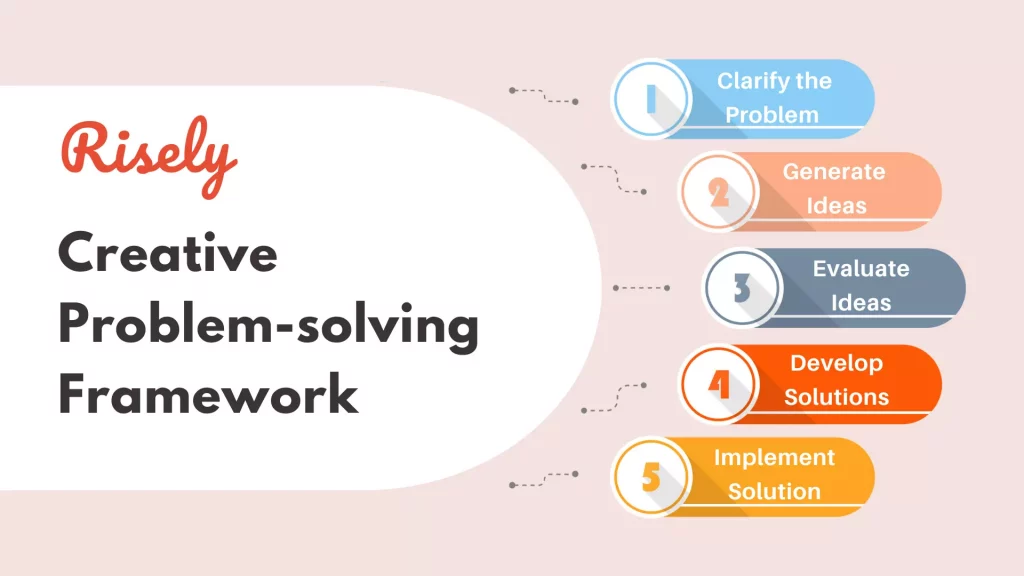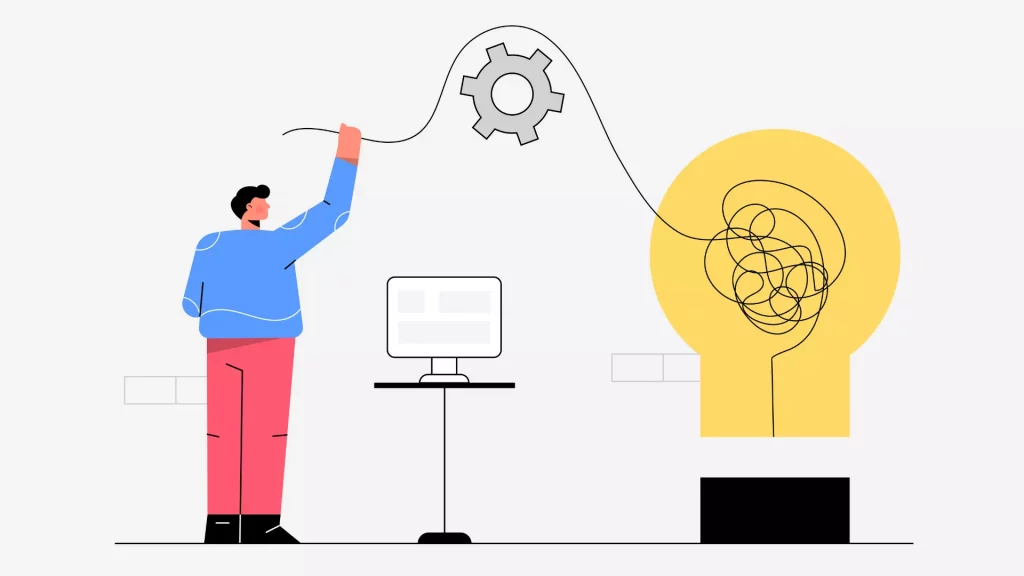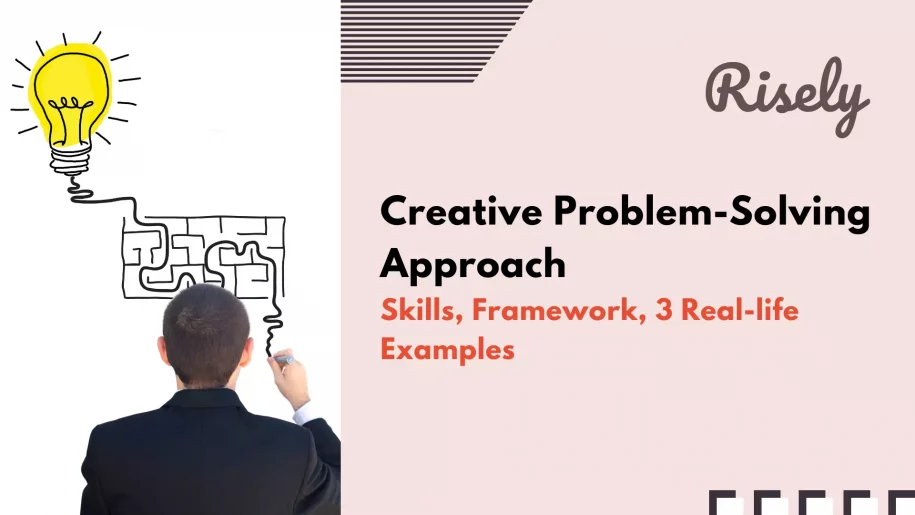Creative Problem-Solving Approach: Skills, Framework, 3 Real-life Examples
You ever stare at a problem like it’s a brick wall, completely stumped for a solution? You brainstorm every idea you can think of, but nothing feels quite right. This mental block happens to the best of us. But here’s the thing: there’s a secret weapon successful problem-solvers have in their arsenal – creativity. It’s the ability to think outside the box, to see things from a different angle, and to come up with innovative solutions that leave everyone scratching their heads wondering why they didn’t think of it first. Feeling stuck? That’s where this blog comes in. We’ll be your guide on a journey to mastering the art of creative problem-solving. We’ll explore different techniques, shatter those mental roadblocks, and help you develop the skills to tackle any challenge that comes your way. So, whether you’re a leader facing a complex business issue, or someone simply looking to navigate life’s everyday hurdles, this blog is for you. Let’s ditch the frustration and unlock the power of creative problem-solving together!What is Creative Problem-solving?
Creative problem-solving is breaking down problems to understand them, generate solutions, and evaluate them to find an effective solution. Alex Osborn and Sydney Parnes originated the creative problem-solving approach in the 1940s. The approach involves three main steps: problem identification, ideation, and implementation. Firstly, it is essential to identify the specific problem or issue that needs solving. Then, once you have identified the problem, it’s time for ideation – brainstorming possible solutions to the problem and testing each one out. Finally, the best solution is chosen and implemented after carefully considering all the options. The importance of creative problem-solving in everyday life cannot be overstated. By learning this skill, individuals can build their confidence and develop a more independent approach to decision-making. Creative problem-solving is used in scenarios such as;- Finding a new solution for a recurring issue at work
- Generating new marketing ideas for an upcoming product launch
- Coming up with unique ways to engage employees during meetings
Creative Problem-solving Framework

- Identifying the Real Problem: Imagine you wake up to a cold shower. The obvious problem? No hot water! But before you start dismantling the showerhead, take a step back. Is it a faulty heating element, a low thermostat setting, or a bigger issue with the building’s plumbing? This initial step is crucial. Ask yourself questions like “What are the symptoms?” and “When did this problem start?”. In our shower scenario, identifying the root cause (a faulty heating element) saves you time and unnecessary tinkering.
- Generating Wild Ideas: Now, it’s time to unleash your creativity! Remember that brainstorming session in school where every idea, no matter how wacky, was welcome? That’s the spirit! Back to our chilly shower situation, ideas might include: boiling water on the stove for a makeshift bath (not ideal!), calling the landlord for repairs (the most likely solution!), or – if you’re feeling adventurous – installing a solar water heater (hey, it could work!).
- Evaluating Ideas: Okay, so you have a list of ideas, from the practical to the downright peculiar. Here comes the filter. Evaluate each idea based on realistic criteria. For the shower scenario, fixing the heating element is likely the most feasible and impactful solution. While a solar water heater might be innovative, the cost and practicality might not make it the best choice at this moment.
- From Idea to Action Plan: We’ve identified the best course of action (fixing the heating element). Now, it’s time to develop a concrete solution. This might involve calling a plumber, gathering the necessary tools, or researching DIY repair tutorials (if you’re handy!). The key is to create a clear plan that addresses the problem directly.
- Putting Your Solution to the Test: The plan is in place, it’s time to implement! In our case, this means calling the plumber and getting that heating element fixed. Once the repair is done, take a celebratory hot shower! But remember, even the best plans can have hiccups. If the hot water issue persists, you might need to re-evaluate your initial diagnosis or call the plumber back for further troubleshooting.
Other Interesting Reads
3 Real-life Examples of Creative Problem Solving:
- Netflix: The company revolutionized how we watch TV shows and movies. However, when the company started, it faced a big challenge – getting people to watch their content when they were not a well-known brand. Instead of relying on traditional advertising, Netflix used creative problem-solving to develop a unique solution. They created an algorithm recommending TV shows and movies based on a user’s viewing history, leading to a highly personalized viewing experience. This recommendation engine became a critical factor in the company’s success, helping them attract and retain customers.
- NASA: NASA had to devise an instant solution to save the Apollo 13 mission and their team. Their spacecraft was damaged, and they needed a solution to bring their astronauts safely back to Earth. The team fitted a square CO2 filter into a round hole using available materials on the spacecraft; the team used creative problem-solving to develop this approach. This innovative solution allowed the astronauts to return safely to Earth and set this incident as a classic creative solving example.
- IKEA: IKEA makes stylish and affordable furniture and is a well-versed company. However, they faced significant challenges entering the Japanese market. Japanese apartments are comparatively smaller than the rest of the world, so the regular product range was irrelevant to Japanese customers. So, IKEA used creative problem-solving to develop a solution appealing to the Japanese market. They launched a variety of products specially created for smaller spaces that are easy to assemble and disassemble—they also introduced a range of futons designed to look like beds, appealing to Japanese customers who prefer sleeping on the floor. This innovative and creative approach helped IKEA successfully enter the Japanese market.

Skills to Develop for Creative Problem-Solving
Creative problem-solving skills involve approaching problems in innovative and original ways. These skills can be developed through practice and using various techniques and strategies. Some essential skills for creative problem-solving include:- Flexibility: Being able to adapt to changing circumstances and consider multiple perspectives.
- Open-mindedness: Being open to new ideas and willing to challenge assumptions.
- Curiosity: Seek more information by questioning and better understanding the problem.
- Persistence: If a solution does not work, apply another solution, but continue until the problem is solved.
- Divergent thinking: Generating multiple ideas and exploring different possibilities.
- Convergent thinking: Evaluating and selecting the best ideas based on specific criteria.
- Visualization: Using mental imagery to explore solutions and ideas.
- Collaboration: Working with others to combine different perspectives and knowledge.
- Risk-taking: Being willing to take calculated risks and try new approaches.
- Innovation: Combining ideas and approaches in novel ways to create new solutions.
Conclusion
Creative problem-solving in a structured approach to finding effective and innovative solutions to complex problems. It is used in various domains of life, such as business, personal growth, and innovation. By systematically identifying the problem, researching it, generating ideas, evaluating it, and executing an action plan, you can overcome complex issues that seem unsolvable at first glance. To enhance your leadership or manager abilities, sign up to Risely and train yourself.Evaluate your problem-solving skills for free now
Take the free problem-solving assessment by Risely to get started on your journey.
FAQs
What are the five steps in creative problem-solving?
The five steps in creative problem solving are: problem identification, information gathering, idea generation, evaluation and selection, and implementation.
What are the 4 Ps of creative problem solving?
The 4 Ps of creative problem solving are Problem, People, Process, and Product. They refer to the different aspects that must be considered when solving problems creatively.
Is creative problem solving a skill?
Yes, creative problem-solving is a skill that involves using creative and innovative approaches to find solutions to problems. It can be developed and improved through practice and training.
How is creative problem solving a logical process?
Creative problem-solving is a logical process involving using rational and analytical thinking to identify, evaluate, and select the best solution to a problem while incorporating imaginative and innovative approaches.
Other Related Blogs
Top 15 Tips for Effective Conflict Mediation at Work
Top 15 Tips for Effective Conflict Mediation at Work As a manager or leader, you might be familiar with the conflicts that arise in the workplace. It’s not always easy…
Top 10 Games for Negotiation Skills to Make You a Better Leader
Top 10 Games for Negotiation Skills to Make You a Better Leader Negotiation skills are essential in today’s workplace and can be honed through various methods. One fun and effective…
Manager Effectiveness: A Complete Guide for Managers in 2024
Manager Effectiveness: A Complete Guide for Managers in 2024 Manager effectiveness is everyone’s favorite buzzword. But the road to achieving it is trickier than it looks like! While manager effectiveness…
5 Proven Ways Managers can Build Collaboration in a Team
5 Proven Ways Managers can Build Collaboration in a Team In today’s fast-paced world, team collaboration is the key to success. But, not all workplaces are conducive to collaborative teams.…


